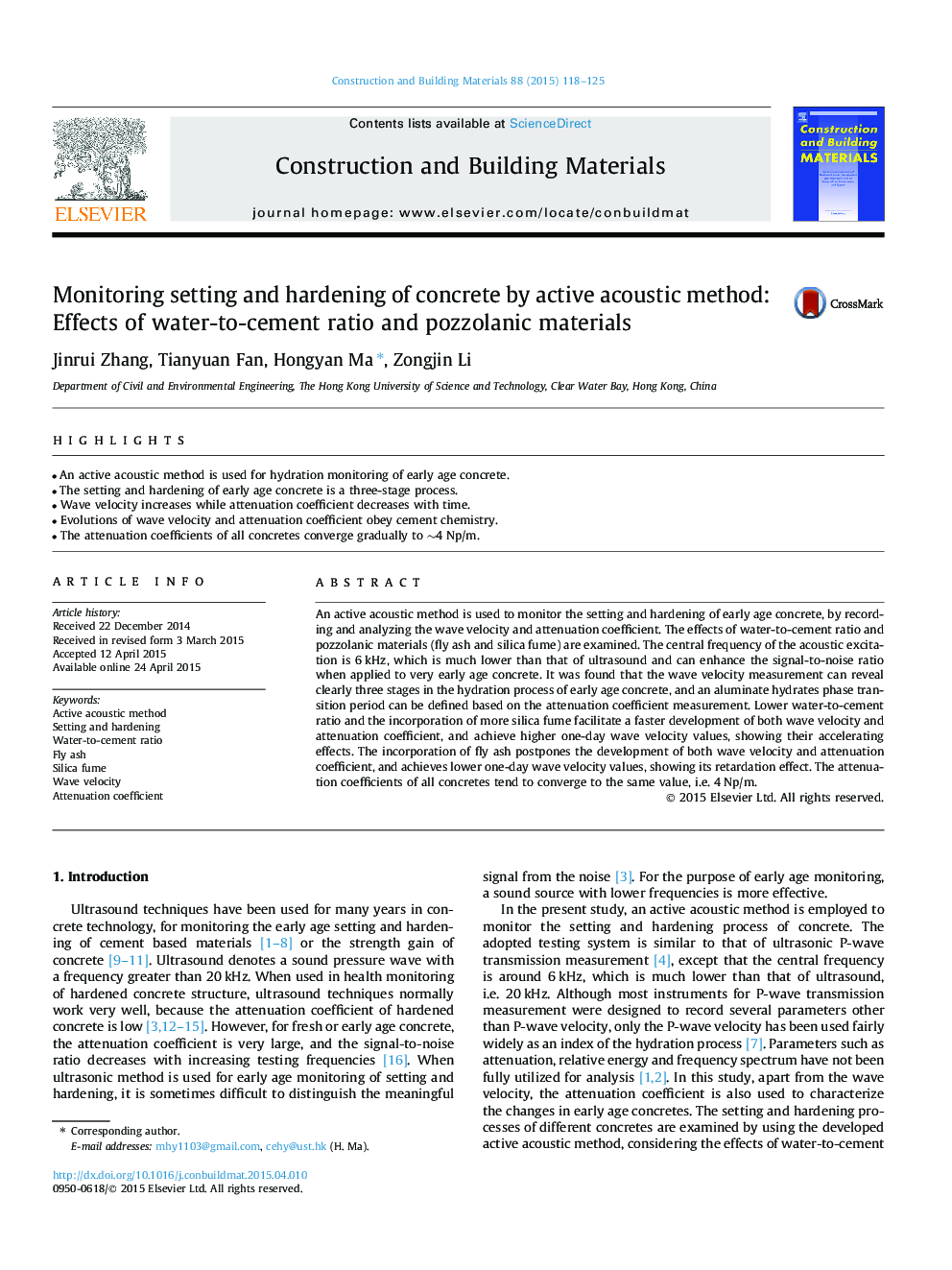| Article ID | Journal | Published Year | Pages | File Type |
|---|---|---|---|---|
| 256957 | Construction and Building Materials | 2015 | 8 Pages |
•An active acoustic method is used for hydration monitoring of early age concrete.•The setting and hardening of early age concrete is a three-stage process.•Wave velocity increases while attenuation coefficient decreases with time.•Evolutions of wave velocity and attenuation coefficient obey cement chemistry.•The attenuation coefficients of all concretes converge gradually to ∼4 Np/m.
An active acoustic method is used to monitor the setting and hardening of early age concrete, by recording and analyzing the wave velocity and attenuation coefficient. The effects of water-to-cement ratio and pozzolanic materials (fly ash and silica fume) are examined. The central frequency of the acoustic excitation is 6 kHz, which is much lower than that of ultrasound and can enhance the signal-to-noise ratio when applied to very early age concrete. It was found that the wave velocity measurement can reveal clearly three stages in the hydration process of early age concrete, and an aluminate hydrates phase transition period can be defined based on the attenuation coefficient measurement. Lower water-to-cement ratio and the incorporation of more silica fume facilitate a faster development of both wave velocity and attenuation coefficient, and achieve higher one-day wave velocity values, showing their accelerating effects. The incorporation of fly ash postpones the development of both wave velocity and attenuation coefficient, and achieves lower one-day wave velocity values, showing its retardation effect. The attenuation coefficients of all concretes tend to converge to the same value, i.e. 4 Np/m.
